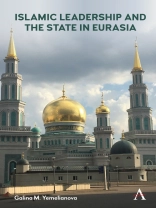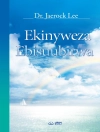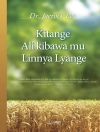The book presents the first integrated study of the relationship between official Islamic leadership (muftiship), non-official Islamic authorities, grassroots Muslim communities and the state in post-Communist Eurasia, encompassing Lithuania, Belarus, Ukraine, the Volga-Urals, Crimea, the North Caucasus, Azerbaijan and ex-Soviet Central Asia. Its analysis is positioned within the current secularism/de-secularisation debate. The book is based on a wide range of primary and secondary sources, including the author’s interviews with Islamic official and popular leaders and authorities, which she conducted over two decades in various parts of Eurasia. The book employs a history-based perspective and compares the nature and role of official Islamic leadership and the state-Muslim relations across Eurasia with those in both the Middle East and Western Europe. It argues that in most of the post-Soviet lands, the official Islamic leadership and its relations with the state have largely retained their particular national and broader Eurasian character, which distinguishes them from what prevails in the Middle East and Western Europe. At the same time, the increasing political ‘Europeanisation’ of Lithuania and Ukraine since 2014 and, to some extent, Belarus, has accounted for their divergence towards the Western model of state-Muslim relations. In conclusion, it analyses the impact of globalisation and the advance of global Salafism, in particular, on Islamic leadership and state-Muslim relations across post-Soviet Eurasia.
Innehållsförteckning
List of Figures; Glossary; Note on Transliteration, Place Names and Calendars; Additional Signs Used; Introduction; Part I Islam, Islamic Authority and Leadership before and during the Russian Rule; Chapter One Authority and Leadership in Islam: A Historical and Comparative Perspective; Chapter Two Islamic Leadership among Tatars and Other Turkic Peoples prior to and during Russian Rule; Chapter Three Islam and Islamic Leadership in the Caucasus; Chapter Four Islam, Islamic Authority and Leadership in Central Asia; Part II Islamic Authority and Leadership in the USSR; Chapter Five The Volga-Urals; Chapter Six The North Caucasus; Chapter Seven The South Caucasus; Chapter Eight Central Asia and Kazakhstan; Part III Islamic Authority and Leadership in Post-Soviet Lands; Chapter Nine Belarus, Ukraine and Lithuania; Chapter Ten European Russia; Chapter Eleven The Caucasus; Chapter Twelve Central Asia; Chapter Thirteen Eurasian Islamic Leadership within the Global Context; Notes; Bibliography; Index.
Om författaren
Galina M.Yemelianova has researched and taught for over thirty years on various aspects of Middle Eastern and Eurasian history, and contemporary Muslim and ethno-national politics. She is currently affiliated to the Centre of Contemporary Central Asia and the Caucasus at SOAS University of London.







![Omslag till Brian Schrag & Julisa Rowe: Community Arts for God's Purposes [Chinese] 貼近神心意的社群藝術 Omslag till Brian Schrag & Julisa Rowe: Community Arts for God's Purposes [Chinese] 貼近神心意的社群藝術](https://static.worldofdigitals.com/thumb_webp/740/9781645083740.webp)




